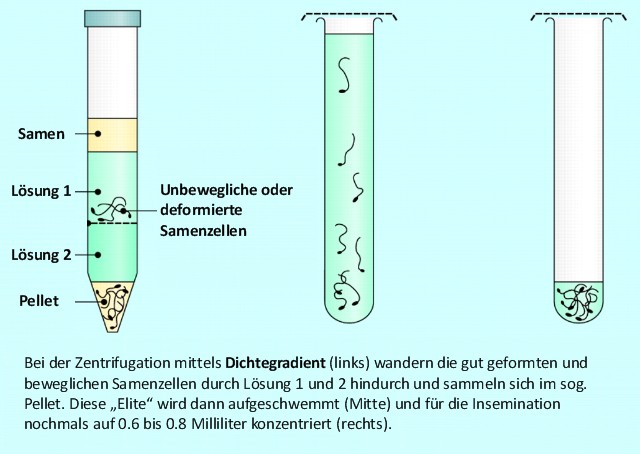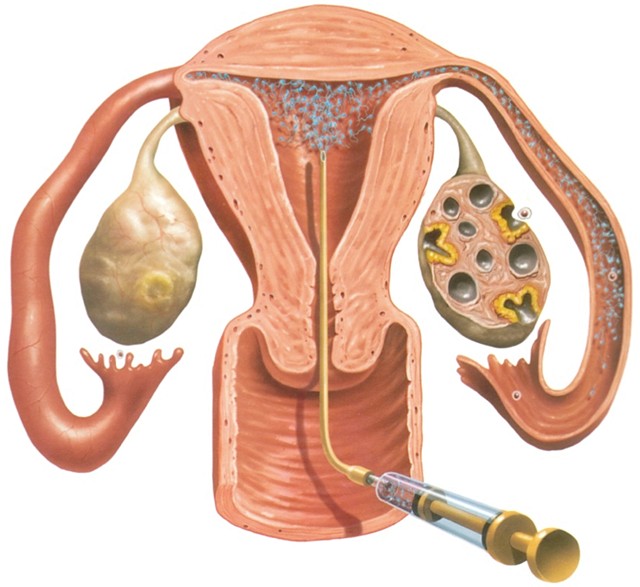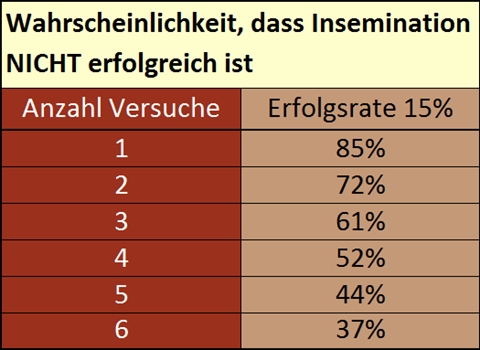
Fertility treatments
Treatment should follow the rule «as simple as possible» and be targeted to the problems found during basic investigation.
Ovulation induction
If a woman does not ovulate at all, or if ovulation is late, ovulation can be induced by means of tablets or self-injections of pure human FSH. Self-injections are superior in women over 35 years and in those with thin uterine lining. In both instances, one or more ultrasound exams are mandatory to check the progress of follicle growth.
Intrauterine insemination I: washing sperm by density gradient
Relatively simple method in situations where sperm movement is moderately impaired, or when the woman's cervix has unfavourable mucus. When the woman's follicle reaches 16 to 18 millimeters on ultrasound, the ovulation is triggered by means of a timed injection, and the man is asked to provide a sperm sample 24 to 36 hours afterwards.
The sperm sample is processed in our laboratory by means of gentle, multiple-step centrifugation through a so-called denstiy gradient. This gives us a concentrate of the «good» sperm cells (those who are mobile and possess normal shape).
Intrauterine insemination II: introduction of washed sperm in the uterine cavity
After some two hours of processing, this concentrate is injected with a thin and flexible catheter in the uterine cavity, a procedure which is usually entirely painless. After insemination, the woman is asked to rest for ten minutes, whereafter she may resume her normal life.
The success rate varying between 10 and 20 percent per attempt, at least three repetitions are certainly meaningful (this is what Swiss health insurance will usually reimburse). If no pregnancy occurs, we plan an intermediate talk with both partners where we discuss the next steps. Those can include assisted reproduction like IVF and ICSI.
Titel
Lead - Lorem ipsum dolor sit amet.
Lorem ipsum dolor sit amet. Lorem ipsum dolor
justo duo dolores et ea rebum. Stet clita kasd.
Titel
Lead - Lorem ipsum dolor sit amet.
Lorem ipsum dolor sit amet. Lorem ipsum dolor
justo duo dolores et ea rebum. Stet clita kasd.
success rates of repeated inseminations
Assuming a success rate of 15% per attempt, one can calculate the probability that the treatment is NOT YET successful, depending on the number of attempts (left column in the table on the right). After three inseminations, the probability of still not being pregnant is around 60%.
(Juan Garcia Velasco / Tin-Chiu Li, communication at the yearly congress of ESHRE in 2012, Istanbul).




